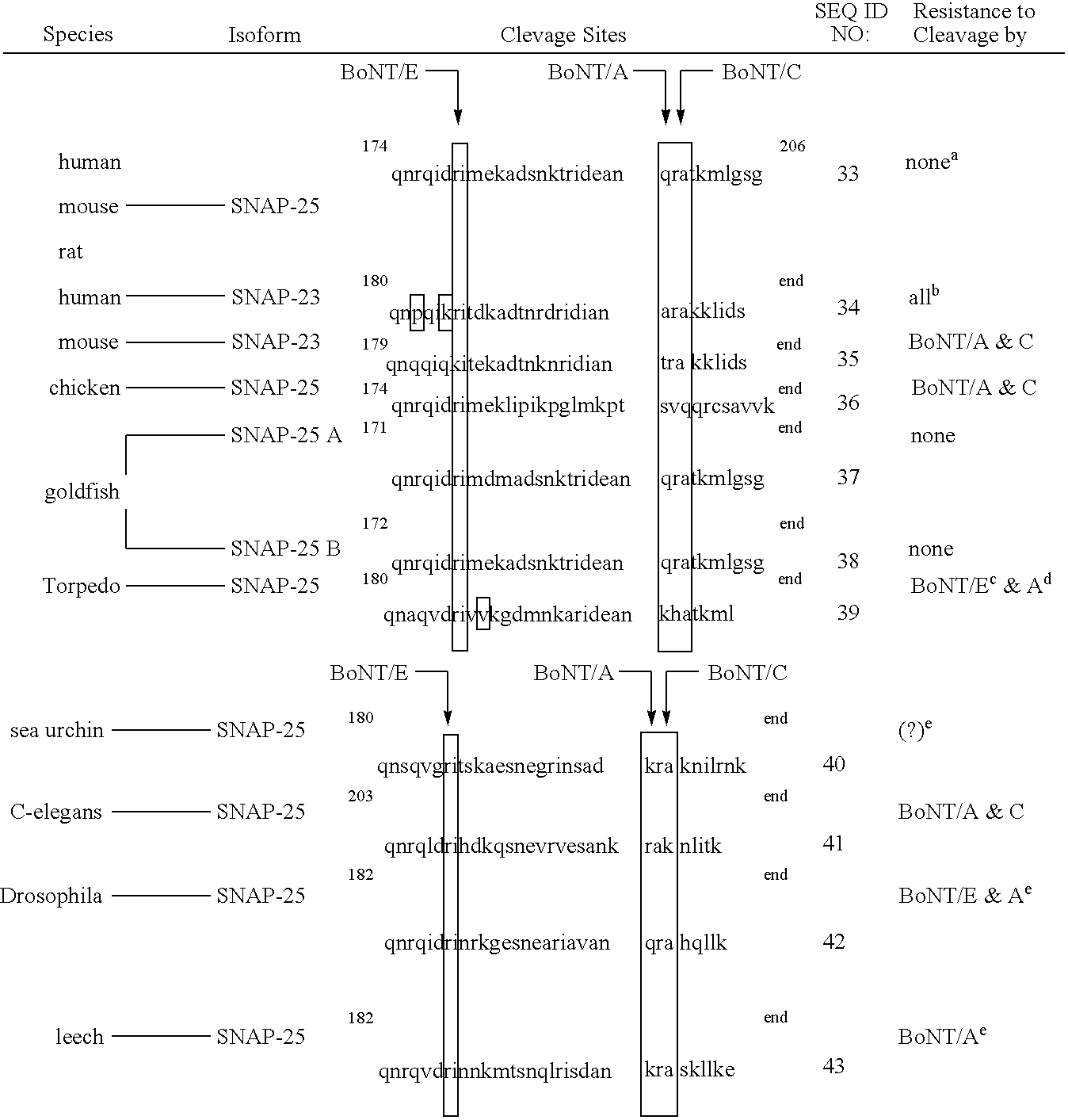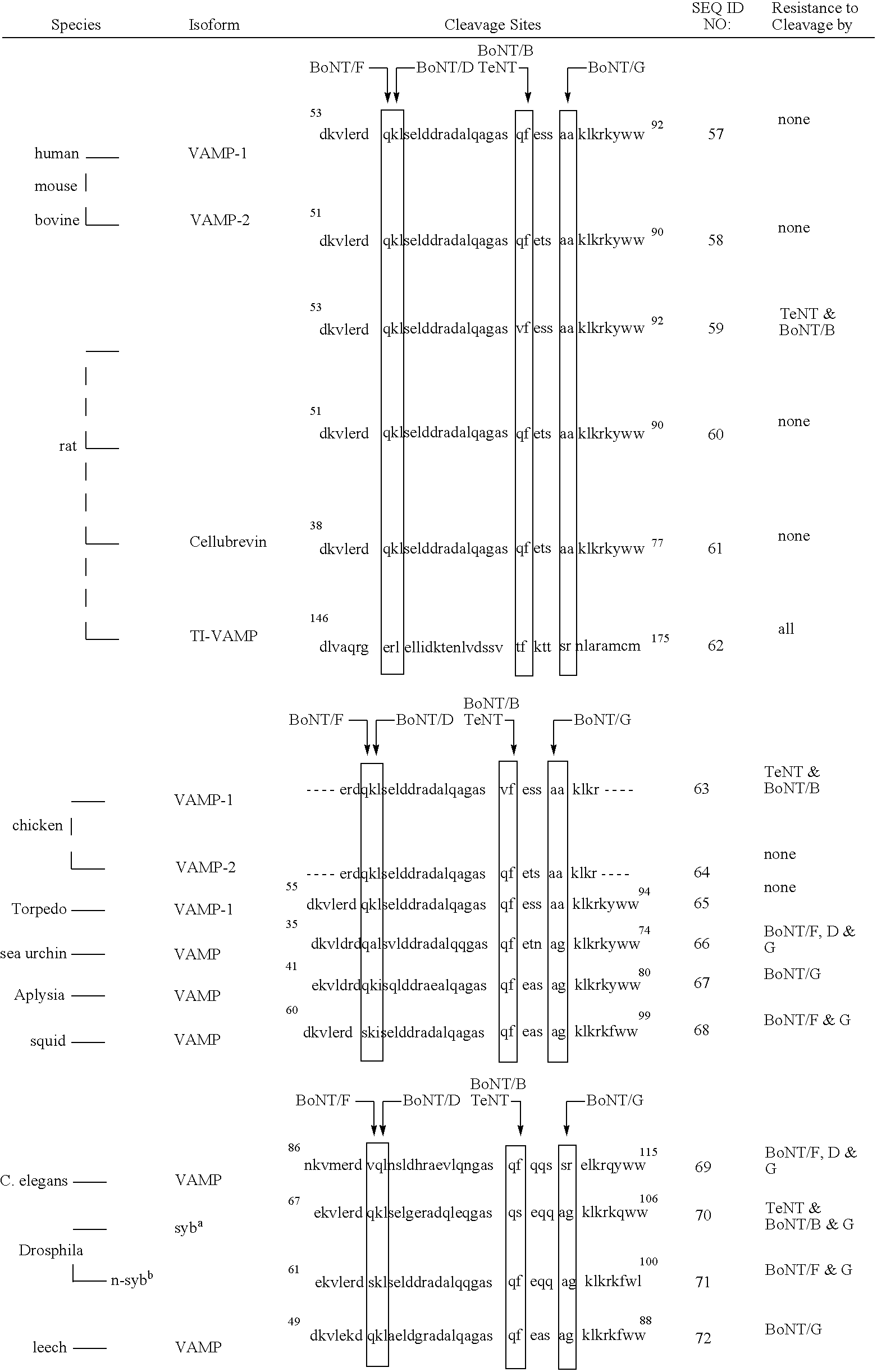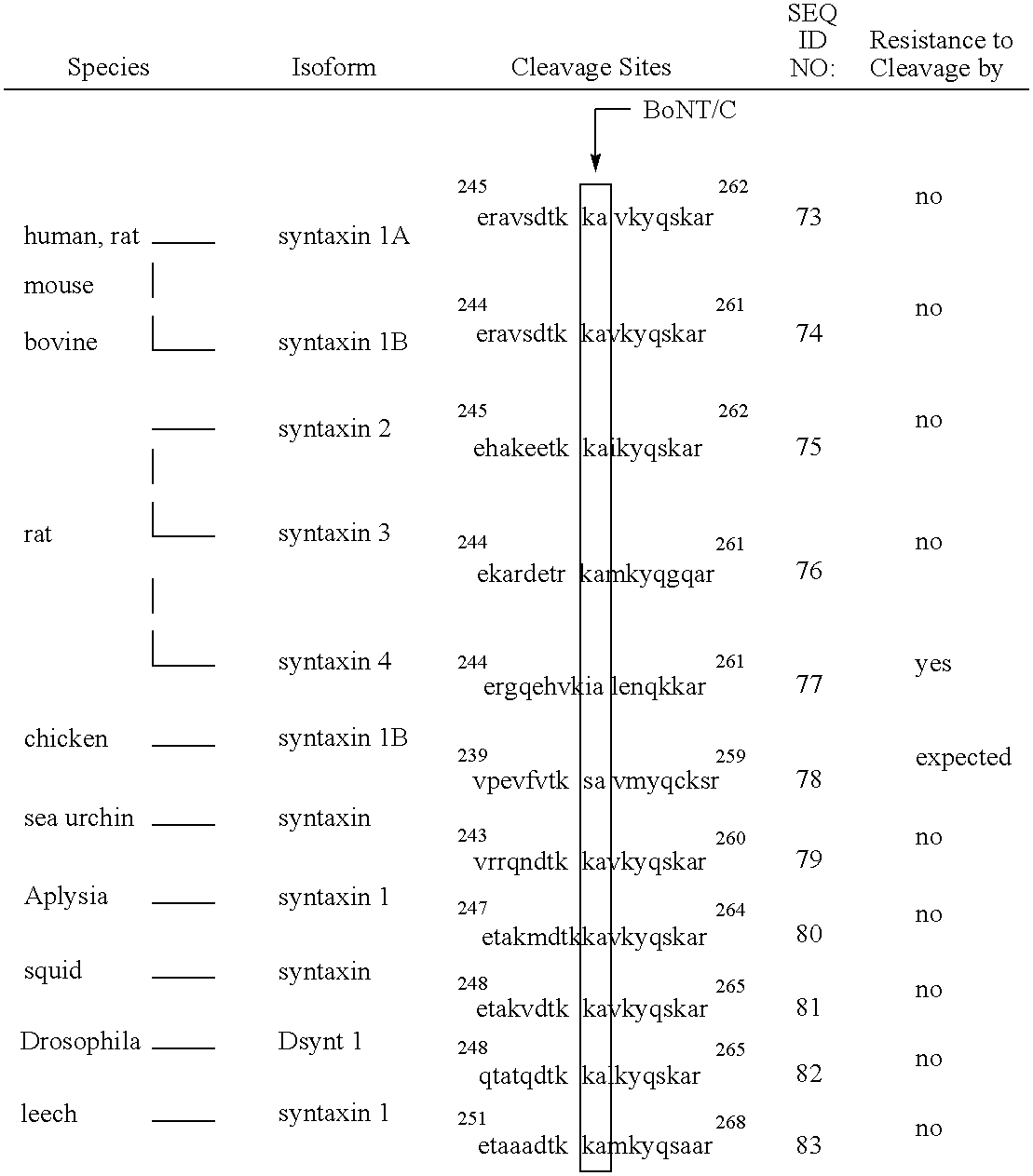GFP-SNAP25 fluorescence release assay for botulinum neurotoxin protease activity
a protease activity and fluorescence release technology, applied in the field of protease assays, can solve the problems of large number of laboratory animals required, lack of specificity, and potential inaccuracy
- Summary
- Abstract
- Description
- Claims
- Application Information
AI Technical Summary
Benefits of technology
Problems solved by technology
Method used
Image
Examples
example i
Expression and Characterization of Recombinant GFP-SNAP-25 Substrates
[0165] This example describes construction of plasmids for expression of GFP-SNAP25(134-206) and SNAP25(134-206)-GFP substrates as well as control substrates containing modified cleavage sites.
[0166] Two GFP substrates containing the same components, but present in the opposite orientations were designed and expressed. Each substrate was a fusion protein consisting of green fluorescent protein (GFP), murine SNAP-25 residues 134-206, and a polyhistidine affinity tag (6×His), with each component separated by peptide linkers. As described further below, the substrates were designed such that the GFP and polyhistidine tag were fused to opposite termini of SNAP25(134-206). The fusion protein substrates were designated GFP-SNAP25 and SNAP25-GFP.
A. Construction of pQE50 / BirASNAP(128-206)
[0167] The SNAP-25 sequence was obtained from pT25FL, a plasmid which contains the full-length mouse SNAP-25 gene inserted in frame ...
example ii
GFP-SNAP25 Fluorescence Release Assay
[0186] This example describes specific proteolysis of GFP-SNAP25(134-206) and quantification of proteolysis using a fluorescence release assay.
A. Overview of GFP-SNAP25 Fluorescence Release Assay
[0187] A summary of the GFP-SNAP25 fluorescence release assay is illustrated in FIG. 10G. Processing of the reaction mixture was dependent on the presence of a polyhistidine affinity tag which facilitates immobilized metal affinity chromatography (IMAC) separation of unreacted GFP-SNAP25 from endopeptidase generated GFP-SNAP25(134-197) cleavage product. As an overview, the treated substrate was processed as follows. First, a solution phase reaction was initiated by the addition of substrate to the appropriate light chain (zinc metalloprotease) or pre-reduced botulinum neurotoxin (serotype A, C, or E). Following incubation for the desired period of time under conditions described further below, the reaction was quenched by the addition of guanidinium c...
example iii
Variation of Assay Conditions with Recombinant GFP-SNAP-25 Substrate
[0199] This example describes variation and optimization of the GFP-SNAP25 fluorescence release assay.
A. Assay Optimization: BSA vs. Tween-20
[0200] Initially, GFP-SNAP assays were conducted in Toxin Reaction Buffer containing bovine serum albumin (BSA) as a protein carrier / stabilizer (50 mM Hepes, pH 7.4, 10 μM ZnCl2, 10 mM DTT, and 0.1 mg / ml BSA). The reaction buffers for some botulinum neurotoxin assays contain the detergent TWEEN-20, rather than BSA. An investigation comparing the effect of these protein stabilizers on BoNT reactions revealed that serotypes A, C, and E all have significantly higher activity in the presence of 0.1% (v / v) TWEEN-20 as compared to BSA. These results indicate that the use of TWEEN-20 in place of BSA results in higher activity for BoNT / A, / C and / E.
B. Assay Optimization: pH
[0201] The pH of the protease reaction buffers was varied within the range of 7.0-8.2. Bulk A toxin was mos...
PUM
| Property | Measurement | Unit |
|---|---|---|
| wavelengths | aaaaa | aaaaa |
| fluorescent | aaaaa | aaaaa |
| affinity | aaaaa | aaaaa |
Abstract
Description
Claims
Application Information
 Login to View More
Login to View More - R&D
- Intellectual Property
- Life Sciences
- Materials
- Tech Scout
- Unparalleled Data Quality
- Higher Quality Content
- 60% Fewer Hallucinations
Browse by: Latest US Patents, China's latest patents, Technical Efficacy Thesaurus, Application Domain, Technology Topic, Popular Technical Reports.
© 2025 PatSnap. All rights reserved.Legal|Privacy policy|Modern Slavery Act Transparency Statement|Sitemap|About US| Contact US: help@patsnap.com



